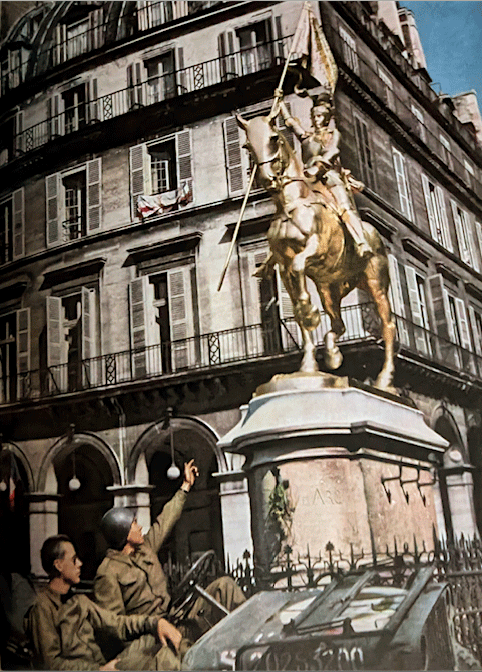
Scroll Down To Order
Scroll Down To Order
A flicker of hope
is all that stood
. . . against barbarism.
Another outbreak of such a crisis of madness
[meaning the First World War]
would necessarily involve the destruction of
society in the public order. June 1, 1933
People cried out
for a better future.
Germany neither intends nor wishes
to interfere in the internal affairs
of Austria or to conclude an Anschluss. May 1935
If the problem is solved,
there will be no further territorial damands
in Europe by Germany. Sep 1938
CASTLES OF THE MIND ... VENTURE ACROSS ALL BRIDGES
Men and Women during the Liberation of Paris
August 25, 1944


08-24-1944
Vive La Liberation Vive La Revolt
Recommended: Eleven Days in August.
On their way to Paris. Were they? It would have been a tragedy had they not. What exactly happened in 1944?
The French metropolis was militarily going to be bypassed initially, however after some debate and a civilian uprising, Allied generals decided to liberate it. GIs hoped to get into a convoy bound for the direction of Paris (silent, merci atelierdesarchives Best Of).
AND, there was no confusion once the word got out.
Among them were Ernest Hemingway, Ernie Pyle, Charles Wertenbaker, female reporters Lee Carson of INS and Helen Kirkpatrick of Chicago Daily News, in a beret, among others. Field Marshall Montgomery detested female reporters. Wes Gallagher of AP, from San Francisco, California, it is said beat everybody, including Whitehead, into Paris (about 7 mins, but you could skip to August, after 36 seconds advance to 5 min mark, if you like.) Wes Gallagher was a good friend of Ernie Pyle. With the camera team is Hollywood director George Stevens, holding a pencil. Next is Gen. Leclerk in French kepi cap conversing with his troops—and the moments before the grand liberation, through the suburbs. His French 2nd Armored Division was given the opportunity to liberate Paris.






Two thousand years of history on the cusp of destruction. Two revered Americans in color at the Front, Ernie Pyle and George Stevens. One a correspondent, one a Hollywood director, both in France.


On the left are three German vehicles set on fire. Next to the Arc de Triumph is a German truck hightailing it out of Paris. Next to that is a burning tank amidst the trees. A shot of a critical operation in the hospital in Paris named Hotel-Dieu. A scene of the barricades. Forces Françaises de l'Intérieur.

RUN




Aux Barricades




A burning Paris with the Eiffel Tower in the background.
Confusion reigned in the City of Lights.
Would the Allies arrive on time, would they even come?
The Resistance was composed of different political factions. The Resistance arose, a cease fire arose, a negation of sorts disagreeing with the convention sprang and events were driven by incongruent elements. The Germans agreed to adhere with the Geneva Convention, a crucial point. This did not include the SS.
But, the occupation was to end on August 25, 1944.
A priest from the abbey Foliet, a champion of FFI, encouraged young fighters. The Resistance and the people of Paris were brave and were in dire straits, and asked for help (merci ProjektErinnerung.) The situation became serious.



An episode in time for posterity, (in b-w) piece by piece of liberation. In color is 18-year old Simone Ségouin. During the war, many changed their names, and she adopted the name Nicole Minet. She was one of four million Parisiens.



Before the curtain would close in August, (below in b-w) time ticked away for these Allied soldiers, the dark and dreary truth. These series of actual, but sad photos, show part of a tank crew removed after their Sherman was hit. This was actual war. They were inside the tank and there was the gruesome task of removing the bodies, one of the dead has no head. Tank column was hit hard before reaching Paris, and was part of a column attached to the Fr. 2nd Armored Division that came from the south to liberate Paris, via Rambouillet and not Versailles. War is tragic. During the critical stage of Liberation, in color, was U.S. commander General Omar Bradley, popularly nicknamed by Americans the GIs general. Technically, part of the U.S. First Army had a hand in liberating Paris with General Leclerk's troops. By August Gen. Bradley was leader of all U.S. forces, not a field commander, but in charge of a much larger force in the advance through Europe, behind Gen. Eisenhower. From Missouri, taller than both Eisenhower and Montgomery at 6ft 2—but the height of a person is not typically associated with a person's rank. What counts is what's inside, not how big he is in height. Don't miss our chronology.







Allowed snipers but sparred the total destruction of Paris, above Gen. Dietrich von Choltltz.
The next three pictures are essential: from the vicinity of Avranches reinforcements pour in. With the soldiers were the cameramen and reporters. The FFI, in this case the Resistance in Chartres.




Aug 25—At dawn, Fr. 2nd Arm Div troops enter Paris. Leclerks' spearhead tanks entered from the direction of Porte d'Orleans and the Place d'Italie, close to the new subway station that comes direct from the Paris Orly Airport and but 14 mins away from Paris. This subway station came at the right special time for the Paris Olympics. Paris (above) is liberated, becoming the third European capital to be liberated, by both French and U.S. forces, video is the column from Versailles I believe in their initial approach; Liberation of Paris in color, at 4.34 mins is Gen. von Choltitz and his staff captured. Courtesy of CHRONOS-MEDIA History. The first minutes things are still tense. Authentic Paris in color that is 79+ years old and not colorized. Sometimes life is a bit chaotic, brother you better believe that is the way it was. De Gaulle close-up at 7.19 mark. One day a cease fire, the next min. no cease fire, back to a cease fire then you see a guy with a white flag and a red cross walk and boom, he gets shot by a German. On top of that you had rumors flying left and right, as bullets flew left and right. With the German soldiers out of Paris, electricity began to flow regularly. GIs of the 4th Inf Div entered Paris by the Porte d'Italie; by 7:30 am, radioed they were in Notre Dame. Gen. von Choltitz Paris military governor, lied to his superiors and left the city's landmarks intact, including the beautiful Louvre. (Gen. de Gaulle arrived at the Porte d'Orleans by 9:30 am, next day.) In the afternoon, an element of the British 30th Assault Unit entered via the Porte d'Orleans. Battle For Paris United News, Aug. 25 this is a newsreel what the people back home saw (12 mins). Allies gathered at the Arc de Triumph by 3:30 when the German garrison of Paris also surrendered and the Allies received von Choltilz as a prisoner, while other French units kept streaming into the capital. Notice how large the metropolis of Paris is. There was no time for parties as there were numerous Germans in the city, still. Combat of Leclerc's 2nd armored, the 4th and their tanks helped the FFI liberate their city by 8 pm, and all day stretcher bearers were busy tending to the injured from regular fire and by snipers. Joyous people are estatic, lengthy 8.58mins in b/w, courtesy British Movietone, a Paris recap. Hitler's main troops hit the road. The giant bells of Notre Dame sounded like this in August after being silent nearly 4.4 years. Avignon, 690 km away (428 miles), is liberated by U.S. and French forces. In some of the following photos, you see people that hit the deck to avoid stray bullets. War is also bittersweet. The pounding hearts of thousands and thousands echoed August 25—a moment Paris was finally free from the Nazis. Mini Paris map. Place d'Italie is just left of #13 on map, not shown.










General Charles de Gaulle triumphantly returned to Paris. Sgt. Sandy Hirschhaut, an American, was there with de Gaulle, in 1944. My deep gratitude to the Palm Springs Air Museum and DR.DAVE THOMPSON. De Gaulle on radio, from the Hôtel de Ville said, “Since the enemy which held Paris has capitulated into our hands, France returns to Paris, to her home.” Yet, skirmishes continued in Paris.
Outside Paris, everything was dire for Germany, from the south was a pressing entry of Allies.
In the north, it was horrible, and citing a small example, the German Fifth Panzer Army had some 18,000 troops, 314 artillery, and 42 tanks and self-propelled guns. The British-Canadian allied combined forces plus the Americans had over 100,000 infantry in line plus another 90,000 troops in reserve, plus 1,300 artillery and 1,900 tanks at the Western Front.
No wonder General von Choltilz called it quits in Paris.
Liberation insights courtesy of Origins OSU. In color as Paris was safer, the Aug. 25 film narrated by Jack Lieb who was there 81 years ago has been deleted; he shot with both color and b-w film (10.32 min, combo and shorter version 4.25 min all removed); on assignment for News of the Day and shot in bw; the color film was his personal film, also in 16mm. SO we replaced it with his longer version across Europe, thanks to Rick Revel Mister History. It begins in London. The later shot of GIs marching down Champs-Élysées "on the way to the frontlines" was not Aug. 25 but Aug. 29, when the U.S. 28th Inf Div was given the luck to go down the Champs-Élysées amidst throngs of Parisiens and bikes however, they right away went to the Front and taken to fight in the Huertgen Forest, a very nasty place to fight, and is described in Valentine's 1944 commemorative. We are grateful Rick's sharing what photographer Lieb remembered and history of the parade by LionHeart FilmWorks. Recommended and it is free, in text and audio format: The Liberation of Paris PDF, by Jean Edward Smith.
Beautiful free Paris Aug. 25, 2019 75th Anniversary parade festivities (about 11 mins, merci Neo035). Come take an 11 min. ride through the beautiful boulevards of Paris. The Summer Olympics came to Paris, les Jeus Olympiques Paris 2024. There is a famous contemporary song called 2525: If man is still alive, the way the world is marching in 2025, the life of humankind may not find the Los Angeles Olympics in 2028, and instead of 2525, a precarious life may swing by, of when humanity sheds a tear, whether man is still alive; Europe is in danger of World War. We already have sons and daughters from a glass tube. U.S. 9th A.F., getting back to 1944, challenges Luftwaffe over Beauvais and Reims in fierce combat air duels, destroy 127 German aircraft, damage 33; the back of the Luftwaffe breaks over France. U.S. 4th Arm Div, Third Army, used their tanks to charge old wild West Calvary style and secure city of Troyes, with crazy city battling. All b-w pictures are from the author's collection except the one with the girl kissing a tanker above the color photo of Americans in a jeep next to the statue of Joan of Arc in la Place de Rivoli. Troyes lay on the Seine River, and it was not defended by 500-600 Germans, it held a force of 2,000 SS defenders. However, they were up against the best of Patton's, the U.S. 4th Arm Div. Inside Troyes, a fierce block by block developed, but under pressure, the town was captured. Troopers were lucky and were able to secure a bridge intact. Troyes was liberated August 25, 1944.
In the summer of 1944, another of Patton's 3rd Army units reached Louviers, hours after Paris was liberated, and finds it abandoned; a V-1 fell in the gardens of Buckingham Palace; survivors were still being dug up in other areas of London hit by the V-1 rockets (nearly adjacent the WACs in color admiring art, below); Allied reconnaissance took photos of the Auschwitz Concentration Camp; 1,191 heavies of the U.S. 8th A.F. bombed factories in Germany including a huge synthetic oil plant at Politz; the world of tomorrow, a helicopter test; Musical Parade: Halfway to Heaven released in Technicolor; Rumania declares war on Germany; U.S. sub Picuda sinks destroyer Yunagi and merchant tanker Kotoku Maru near Philippines; U.S. sub Tang sinks Japanese merchant tanker No.8 Nanko Maru off Honshu. Liberation was not an easy task, with the sorrow and loss of comrades, came the happiness followed by the entrance of more Allied ground forces and the too often forgotten saga and critical task of communications. Paris was (is) a giant metropolis with a huge network--and near the end of this page are the unsung heroes, hundreds of WACs who manned the telephone exchange in the metropolis and other vital communications who were part of the SOS nerve center of the capital. SOS stands for Service of Supply. They were all part of the new Seine Base section, of the fabulous %3341st Signal Service Battalion. They gradually filled a number of hotels in Paris. The first detachment of WACS to settle in Metropolitan Paris arrived Aug. 31, 1944, with operations having all kinds of sporadic loss of power and light. Today's 12 million residents of Metropolitan Paris have no idea how good they have it now. The Civil Affairs of SHAEF instituted a plan of importing of up to 2,400 tons of food per day, mainly in the form of food convoys. The delivery came by United States and British forces, at the expense of strategic military ground forces; in addition, nearby French farmers were asked to lend a hand in supplying food for the metropolis. In profile is Jack Lieb.



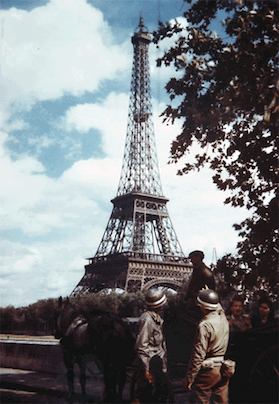

 |  |
|---|---|
 | 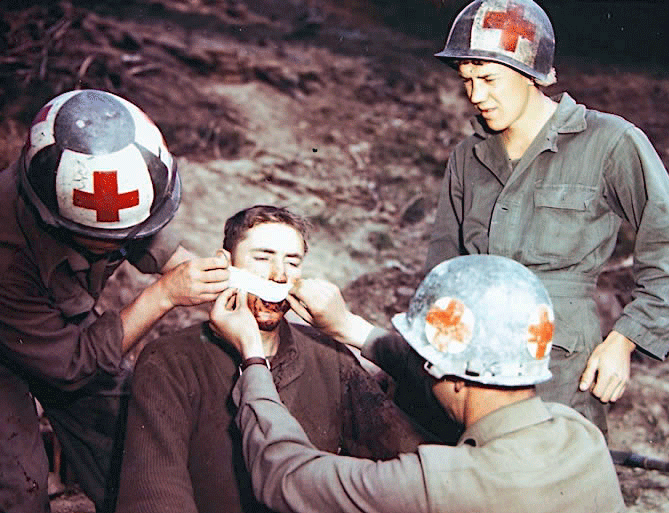 |
 |  |
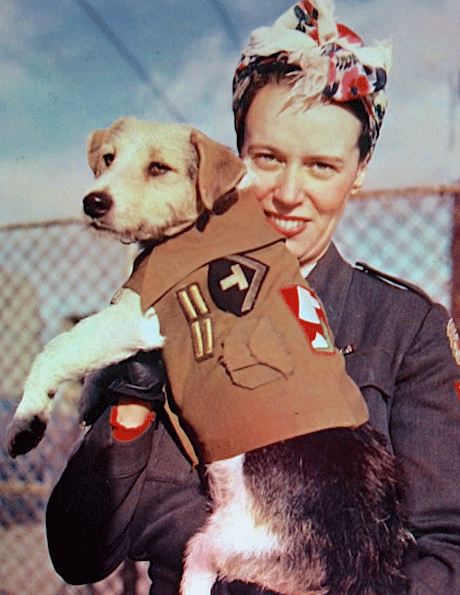 |  |
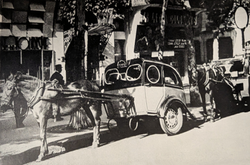 |  |
 |







Your information is protected by
256-bit SSL encryption.

